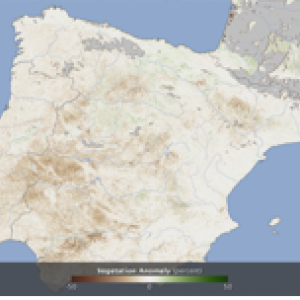
This study by the Potsdam Institute for Climate Impact Research finds that international trade of food crops led to freshwater savings worth 2.4 billion US-Dollars in 2005 and had a major impact on local water stress. Trade of virtually embedded water, describes the amount of water used in the production of agricultural export goods.
The researchers in this study found that it is not the amount of water that matters, but whether global food trade leads to the conservation or depletion of water reserves in water-scarce regions. The regional differences in how much water is needed to produce the same crops are large. In Morocco it takes 2,700 litres to produce 1 kilo of cereal while the same production only requires 520 litres in Germany.
The research determines water savings or consumption due to agricultural trade, analyzing the positive and negative impacts on water scarcity through international trade of crops, livestock and feed. It concludes that countries in Middle East and South Asia profit by importing water consuming goods while agricultural trade deteriorates local water scarcity in Southern Europe because they export water intensive agricultural goods from water scarce sites.
Abstract
International trade of agricultural goods impacts local water scarcity. By quantifying the effect of trade on crop production on grid-cell level and combining it with cell- and crop-specific virtual water contents, we are able to determine green and blue water consumption and savings. Connecting the information on trade-related blue water usage to water shadow prices gives us the possibility to value the impact of international food crop trade on local blue water resources. To determine the trade-related value of the blue water usage, we employ two models: first, an economic land- and water-use model, simulating agricultural trade, production and water-shadow prices and second, a global vegetation and agricultural model, modeling the blue and green virtual water content of the traded crops. Our study found that globally, the international trade of food crops saves blue water worth 2.4 billion US$. This net saving occurs despite the fact that Europe exports virtual blue water in food crops worth 3.1 billion US$. Countries in the Middle East and South Asia profit from trade by importing water intensive crops, countries in Southern Europe on the other hand export water intensive agricultural goods from water scarce sites, deteriorating local water scarcity.
Citation
Biewald A., Rolinski S., Lotze-Campen H., Schmitz C., Dietrich J. P., Valuing the impact of trade on local blue water. Ecological Economics, 2014, DOI: 10.1016/j.ecolecon.2014.02.003
Read the full paper here or access an article describing the research here.
You can also read more in our research library on trade and export here and on water here. There are also many results generated when searching for 'land use + water scarcity'.







Post a new comment »